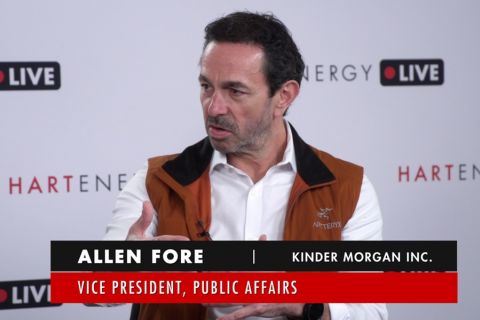
After the intense Permian Basin deal competition of 2016 began to burn off its final stage in first-quarter 2017, U.S. E&P deals began to adjust to a brief period of weightlessness.
The Permian’s unwieldy pace finally slowed as companies began to shift from buying first and drilling later to securing perimeters through bolt-on acquisitions.
By December, what’s emerged is a scattershot approach to deal making in North American plays, perhaps reflecting E&Ps entering in search mode or intent on getting somewhere else.
The spectrum of deals so far ranges from the inconsequential to play-altering. In the Delaware Basin and Marcellus Shale, extravagant purchases warped the transaction landscape. To the north, several super majors fled the Canadian oil sands.
Private-equity backed firms willingly ate up the divestitures that public companies threw to them. Nearly all E&Ps made efforts to appease investors by turning their focus toward acquisitions (or noncore sales) that would improve returns or spot-clean balance sheets.
Out of an ungainly mix of dozens of transactions—some striking, others stricken—Hart Energy selected 10 deals from the Year of the Chicken that stood out for flash, for folly or for ruffling a few feathers.
Sanchez Lands A Haymaker
In a deal secured by grit and gumption, Sanchez Energy Corp. (NYSE: SN) found a way to raise $3.5 billion to buy Anadarko Petroleum Corp. (NYSE: APC)’s Eagle Ford assets. The fact that Sanchez’s $350 million market capitalization was just one-tenth of what it needed in “no-outs financing” was just part of the fun.
CEO Tony Sanchez would later say his company did, indeed, “punch way above our weight class.”
Whether the acreage they see so much promise in pans out, Sanchez landed a haymaker for the ages.
Merging (with traffic)
Just after the beginning of hurricane season, EQT Corp. (NYSE: EQT) launched an ambitious and frequently bitter $8.2 billion takeover of Rice Energy.
The blustery infighting that emerged was not from Rice, but from activist investor Jana Partners, which said that EQT exaggerated the lateral lengths it would add by roughly 3,000 ft and would instead result in only a “modest increase” of 1,000 ft.
EQT, for its part, argued that Jana had its facts wrong and touted its experience operating in the Appalachian Basin for nearly 130 years (roughly the same age as Edison’s patent of the incandescent lamp) and its 2,500 horizontal wells drilled—a good bit of trivia that could be simultaneously inferred as “we know what we’re doing.”
In the end, EQT and Rice merged into the nation’s largest natural gas producer, but plenty remains to be sorted out.
The Big Bank
Credit when credit is due: ExxonMobil Corp. (NYSE: XOM) knows how to make an entrance. In the waning run on the Permian Basin, the oil and gas giant bought up Delaware Basin acreage from the Bass family of Fort Worth, Texas, for $6.6 billion.
ExxonMobil may have been late to the game, but they bought a lot of tickets. Of the 275,000 acres purchased, the company said 250,000 was Permian leasehold. The January deal was also among the first of many deals that added contingency payments—in this case a potential $1 billion.
Still, analysts weren’t entirely convinced the deal connected the right dots.
Brad Heffern, an analyst at RBC Capital Markets, noted ExxonMobil was paying up to $24,000 per acre, which compared well with transactions of the time—“although we would also note that much of the acquired acreage appears to be outside the Delaware core.”
Pounding Oil Sands
ConocoPhillips (NYSE: COP) wasn’t the first to quit the Canadian oil sands but it’s divestiture to Cenovus Energy Inc. (NYSE: CVE) was the largest at $13.3 billion.
While the sales lacked a common denominator, between April 2016 and March 2017 some of the largest E&Ps in the world exited the oil sands. One possible factor may have been Alberta, Canada’s carbon tax that took effect in January.
Whatever the reason, by the time ConocoPhillips bid adieu to Canada, Royal Dutch Shell Plc (NYSE: RDS.A), Marathon Oil Corp. (NYSE: MRO), Statoil ASA (NYSE: STO) and Murphy Oil Corp. (NYSE: MUR)—divested a cumulative $24.3 billion.
‘We’ll Always Have Exit Strategies’
And they say celebrity marriages don’t last.
The joining of General Electric Co. (NYSE: GE) and Baker Hughes Inc. was in all the papers in October 2016. By July 2017 the deal was consummated, and Baker Hughes went off with GE. But somehow the pressures of a committed partnership may prove too much.
On a Nov. 13 conference call, John L. Flannery, GE’s chairman and CEO, addressed BHGE’s role by saying it’s “a good company” and that a new committee’s first task will be “evaluating our exit options on Baker Hughes.”
GE owns a 62.5% stake in Baker Hughes a GE company (BHGE), which it valued at $32 billion prior to the merger.
GE hasn’t formally announced a decision. But after Baker Hughes’ fling with Haliburton Co. (NYSE: HAL) failed to work out, the company may decide it prefers the single life.
From Distressed To The Delaware
If there was just one E&P company that could legitimately hang up a “pardon our dust” sign, it would be Halcón Resources Corp. (NYSE: HK).
Halcón has lit up the A&D markets in Texas—acquiring acreage in deals totaling $1.4 billion—and selling out of the Williston Basin and Eagle Ford for estimated proceeds of $2 billion.
That Halcón went on its tear just four months after exiting bankruptcy is, if nothing else, a tremendous show of confidence for a company that was until recently clinging to the financial ropes.
STORY LINK, STORY LINK, STORY LINK, STORY LINK, STORY LINK
ConocoPhillips Redux
No, this isn’t déjà vu. ConocoPhillips makes this list twice because of yet another sale, this time in the San Juan Basin.
Roughly two weeks after its Canadian oil sands departure, the company agreed to sell its dry gas interests to an affiliate of private E&P Hilcorp Energy Co. for up to $3 billion.
ConocoPhillips sales were in part driven by a goal of divesting assets up to $8 billion to delever its asset base by 2018. Between its oil sands and San Juan sales, ConocoPhillips hit its target in roughly four months—at a value that was about twice its goal.
Mineral Fever
The big discovery of 2017 may well be the sudden rise of mineral companies and their play-within-a-play deals.
The companies often overlay E&Ps, such as FourPoint Energy LLC and its shadow LongPoint Minerals LLC.
With a $525 million commitment in 2016, LongPoint is targeting the Denver-Julesburg and Powder River basins; the Appalachian Basin; the Midcontinent; the Permian among other areas.
In similar fashion, Viper Energy Partners LP (NASDAQ: VNOM), an affiliate of Diamondback Energy Inc. (NASDAQ: FANG), similarly spent at least $277 million on mineral interests in 2017.
Every play seemingly is replete with mineral companies willing to spend—provided the asset is where the action is. In the late innings of 2017, Black Stone Minerals LP (NYSE: BSM) agreed in November to acquire 140,000 net mineral acres in 20 states from Noble Energy Inc. (NYSE: NBL), including 15,500 net acres of royalty interests in the Permian, for $340 million.
STORY LINK, STORY LINK, STORY LINK
When Publics Collide
In one of the most notable Permian Basin transactions of the year, two public combined in a $3.2 billion deal to create, at the time, the second-largest acreage position in the Delaware Basin.
Noble Energy Inc. (NYSE: NBL) paid for Clayton Williams Energy Inc. using equity, cash and debt to add 71,000 net acres and 2,400 gross drilling locations. At the close of the deal in April, Noble’s position encompassed 118,000 net acres.
Nevertheless, Noble’s consolidation has been the exception with few of its Permian peers having seriously moved toward similar combinations.
Eye Of The Panther
In 2015, WPX Energy Inc. (NYSE: WPX) became the prime mover in the Delaware Basin with its large-scale acquisition of RKI Exploration for $2.75 million.
Despite the debt weighing it down, WPX announced another big deal in January by buying 18,000 net acres from Panther Energy Co. II LLC and Carrier Energy Partners LLC for $775 million.
WPX made the deal despite most if not all of the acreage being separate from its existing Stateline development area. WPX, perhaps wary of taking on additional debt, closed the deal in March using cash on hand and roughly $600 million in proceeds from an equity issuance.
WPX’s next trick: the company intends to reduce its 4x net debt-to-EBITDAX ratio to less than 2.5x by year-end 2018. In October, the company had about $1.2 billion in commitments on its $1.5 billion credit facility.
Recommended Reading
US EPA Removes Existing Gas Plants From Proposed Carbon Rule
2024-02-29 - The U.S. Environmental Protection Agency will exclude existing natural gas power plants from its proposed carbon regulations that it plans to finalize in April.
US EPA Expected to Drop Hydrogen from Power Plant Rule, Sources Say
2024-04-22 - The move reflects skepticism within the U.S. government that the technology will develop quickly enough to become a significant tool to decarbonize the electricity industry.
The Jones Act: An Old Law on a Voyage to Nowhere
2024-04-12 - Keeping up with the Jones Act is a burden for the energy industry, but efforts to repeal the 104-year-old law may be dead in the water.
Kinder Morgan Exec: Building Pipelines ‘Challenging, but Manageable’
2024-04-05 - Allen Fore, vice president of public affairs for Kinder Morgan, said building anything, from a new road to an ice cream shop, can be tough but dealing with stakeholders up front can move projects along.
FERC Again Approves TC Energy Pipeline Expansion in Northwest US
2024-04-19 - The Federal Energy Regulatory Commission shot down opposition by environmental groups and states to stay TC Energy’s $75 million project.




